Qlik QSDA2022 - Qlik Sense Data Architect Certification Exam–2022
Refer to the exhibit.
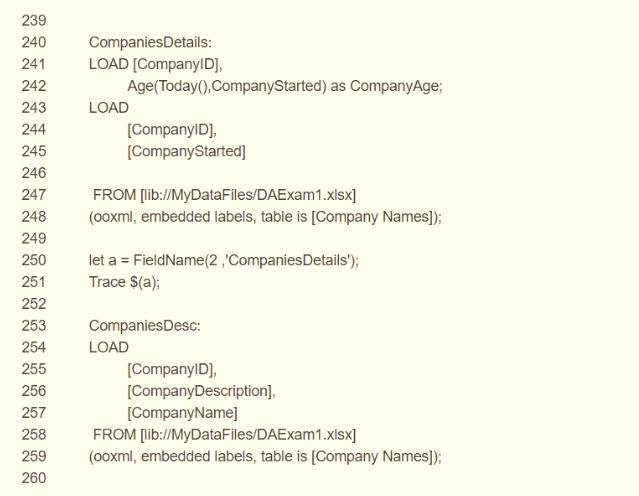
A business analyst reports that the 'CompanyAge' field does NOT display for users The data architect examines the LOAD script and wants to place the breakpoint in the script to check the field name.
Which line number should the data architect use?
A company decides to migrate all apps from QlikView to Qlik Sense. After converting an apps: there are several unconverted objects What should the data architect do?
A data architect needs to upload data from ten different sources, but only if there are any changes after the last reload When data is updated, a new file is placed into a folder mapped to E A439926003 The data connection points to this folder.
The data architect plans a script which will:
1. Verify that the file exists
2. If the file exists, upload it Otherwise, skip to the next piece of code
The script will repeat this subroutine for each source. When the script ends, all uploaded files will be removed with a batch procedure.
Which option should the data architect use to meet these requirements?
Users of a published app report incomplete visualizations. The data architect checks the app multiple times and cannot replicate the error. The error affects only one team.
What is the most likely cause?
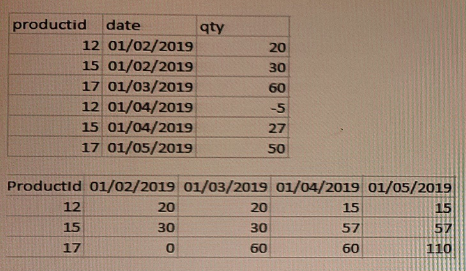
Refer to the exhibits.
The first table shows the source table (Original table).
This data represents the stocks stored every month for each product:
• The relevant fields are productid, qty, and date.
• The date field represents the calendar months using
• The qty field shows the product stock fluctuation from the current month versus the previous month. If there is no fluctuation between months, there are no new entries in the table.
The second table shows a Pivot table visualization the data analyst needs to create in the app displaying per each product the monthly trend of available stock.
For performance reasons, the data analyst requests the data architect to calculate the running stock quantity of each product for every month in the script.
Which approach should the data architect use?
Refer to the exhibit.
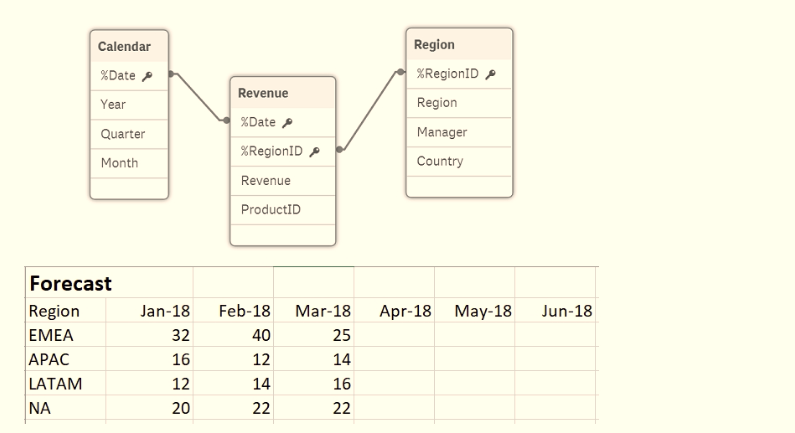
A business department is forecasting revenue within an Excel spreadsheet.
A data architect needs to include this forecast into the existing data model, and without losing any data.
Which two sets of steps will meet these requirements? (Select two.)
A data architect executes the following script.

Which values does the OrderDate field contain after executing the script?
Refer to the exhibit.
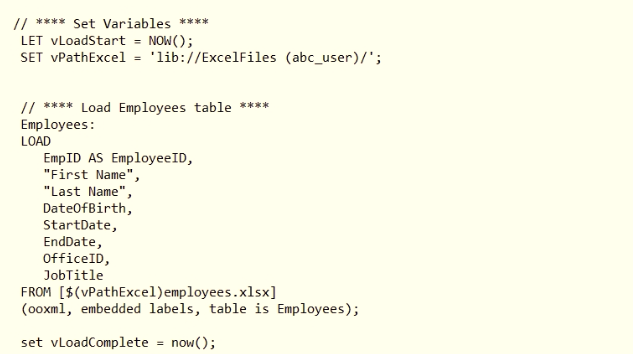
What are the values of the variables vLoadStart and vLoadComplete after the script executes?
A data architect is developing an app that will generate QVDs for multiple business analysts. The field naming conventions on the source data are NOT business friendly. For every table loaded, multiple fields will require a name change.
An Excel file is maintained centrally that lists all source data field names and the appropriate names as they should appear in the QVDs
Which strategy should the data architect use to meet these requirements?
A data architect executes the following script:
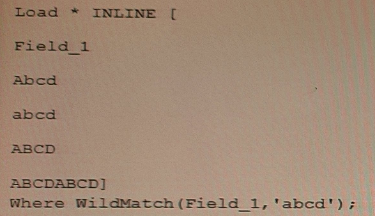
What will Field_1 contain after this script is executed?



